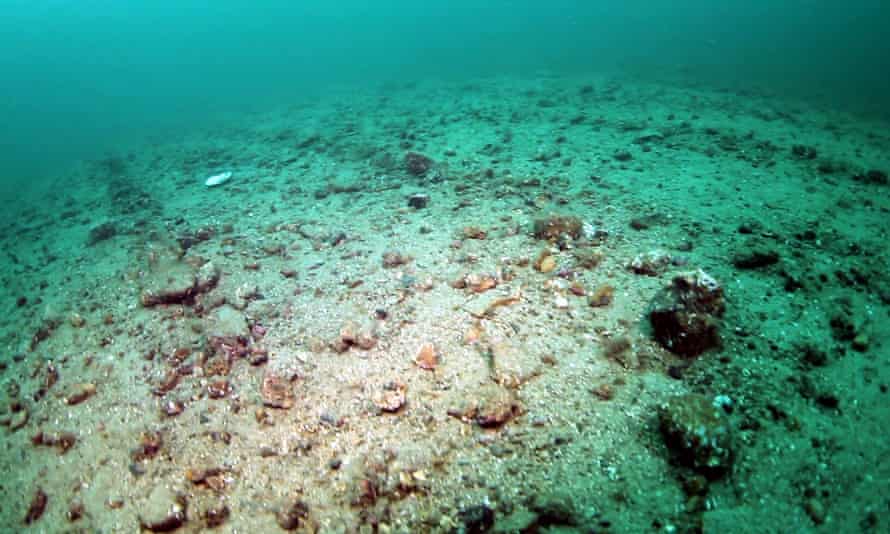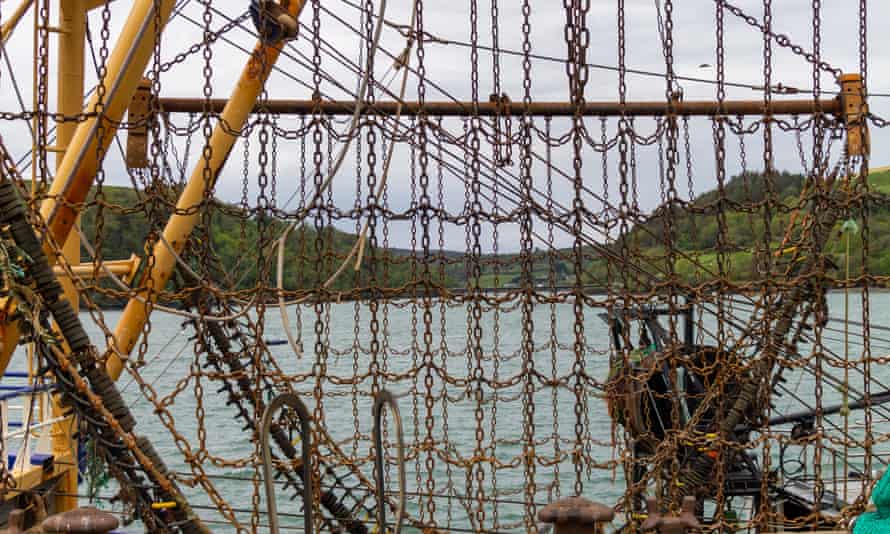Dragging heavy nets across seabed disturbs marine sediments, world’s largest carbon sink, scientists report

Fishing boats that trawl the ocean floor release as much carbon dioxide as the entire aviation industry, according to a groundbreaking study.
Bottom trawling, a widespread practice in which heavy nets are dragged along the seabed, pumps out 1 gigaton of carbon every year, says the study written by 26 marine biologists, climate experts and economists and published in Nature on Wednesday.
The carbon is released from the seabed sediment into the water, and can increase ocean acidification, as well as adversely affecting productivity and biodiversity, the study said. Marine sediments are the largest pool of carbon storage in the world.
The report – Protecting the global ocean for biodiversity, food and climate – is the first study to show the climate impacts of trawling globally. It also provides a blueprint outlining which areas of the ocean should be protected to safeguard marine life, boost seafood production and reduce climate emissions.
Only 7% of the ocean is under some kind of protection. The scientists argue that, by identifying strategic areas for stewardship – for example, regions with large-scale industrial fishing and major economic exclusion zones or marine territories – nations could reap “significant benefits” for climate, food and biodiversity. Protecting “strategic” ocean areas could produce 8m tonnes of seafood, they say.
“Ocean life has been declining worldwide because of overfishing, habitat destruction and climate change,” said Dr Enric Sala, explorer-in-residence at the National Geographic Society and lead author of the paper. “In this study, we’ve pioneered a new way to identify the places that – if strongly protected – will boost food production and safeguard marine life, all while reducing carbon emissions.
“It’s clear that humanity and the economy will benefit from a healthier ocean. And we can realise those benefits quickly if countries work together to protect at least 30% of the ocean by 2030.”
The scientists identified marine areas where species and ecosystems face the greatest threats from human activities. They developed an algorithm to identify regions where safeguarding would deliver the greatest benefits across three goals: biodiversity protection, seafood production and climate mitigation. They then mapped these to create a practical “blueprint” that governments can use, depending on their priorities.
The top 10 countries with the most carbon emissions from bottom trawling, and therefore the most to gain, were China, Russia, Italy, UK, Denmark, France, the Netherlands, Norway, Croatia and Spain.

Photograph: aphperspective/Alamy
The analysis shows that the world must protect a minimum of 30% of the ocean in order to provide multiple benefits. The scientists say their results lend credence to the ambition of protecting at least 30% of the ocean by 2030, which is part of the target adopted by a coalition of 50 countries this year to slow the destruction of the natural world.
Zac Goldsmith, the UK minister for Pacific and the environment, described the paper as “an important contribution to the science on ocean protection and highlights the need for countries to work together to protect at least 30% of the global ocean by 2030”.
He said the UK was playing a leading role in a global ocean alliance supporting this target and promised: “We will do all we can to deliver it at the UN biodiversity conference in China.”
“There is no single best solution to save marine life and obtain these other benefits. The solution depends on what society – or a given country – cares about, and our study provides a new way to integrate these preferences and find effective conservation strategies,” said Dr Juan S Mayorga, a report co-author and a marine data scientist with the Environmental Market Solutions Lab at the University of California, Santa Barbara and Pristine Seas at the National Geographic Society.
The study calculates that eliminating 90% of the present risk of carbon disturbance due to bottom trawling would require protecting only about 4% of the ocean, mostly within national waters.
Dr David Mouillot, a report co-author and a professor at the Université de Montpellier in France, said: “One notable priority for conservation is Antarctica, which currently has little protection, but is projected to host many vulnerable species in the near future due to climate change.”
The study estimated the emissions at between 0.6 and 1.5 gigatons of carbon dioxide a year, or an average of 1 gigaton annually. Aviation emissions of carbon dioxide in 2019 were 918m tons.
The UN’s biodiversity conference, Cop15, which is to be held in Kunming, China, this year, is expected to produce a global agreement for nature, building on the targets already set by some nations to protect at least 30% of the ocean by 2030.
… as you join us today from Vietnam, we have a small favour to ask. Through these turbulent and challenging times, millions rely on the Guardian for independent journalism that stands for truth and integrity. Readers chose to support us financially more than 1.5 million times in 2020, joining existing supporters in 180 countries.
For 2021, we commit to another year of high-impact reporting that can counter misinformation and offer an authoritative, trustworthy source of news for everyone. With no shareholders or billionaire owner, we set our own agenda and provide truth-seeking journalism that’s free from commercial and political influence. When it’s never mattered more, we can investigate and challenge without fear or favour.
Unlike many others, we have maintained our choice: to keep Guardian journalism open for all readers, regardless of where they live or what they can afford to pay. We do this because we believe in information equality, where everyone deserves to read accurate news and thoughtful analysis. Greater numbers of people are staying well-informed on world events, and being inspired to take meaningful action.
In the last year alone, we offered readers a comprehensive, international perspective on critical events – from the Black Lives Matter protests, to the US presidential election, Brexit, and the ongoing pandemic. We enhanced our reputation for urgent, powerful reporting on the climate emergency, and made the decision to reject advertising from fossil fuel companies, divest from the oil and gas industries, and set a course to achieve net zero emissions by 2030.
If there were ever a time to join us, it is now. You can power Guardian journalism and help sustain our future. Support the Guardian from as little as $1 – it only takes a minute. If you can, please consider supporting us with a regular amount each month. Thank you.
(Sources: The Guardian)












Đăng nhận xét